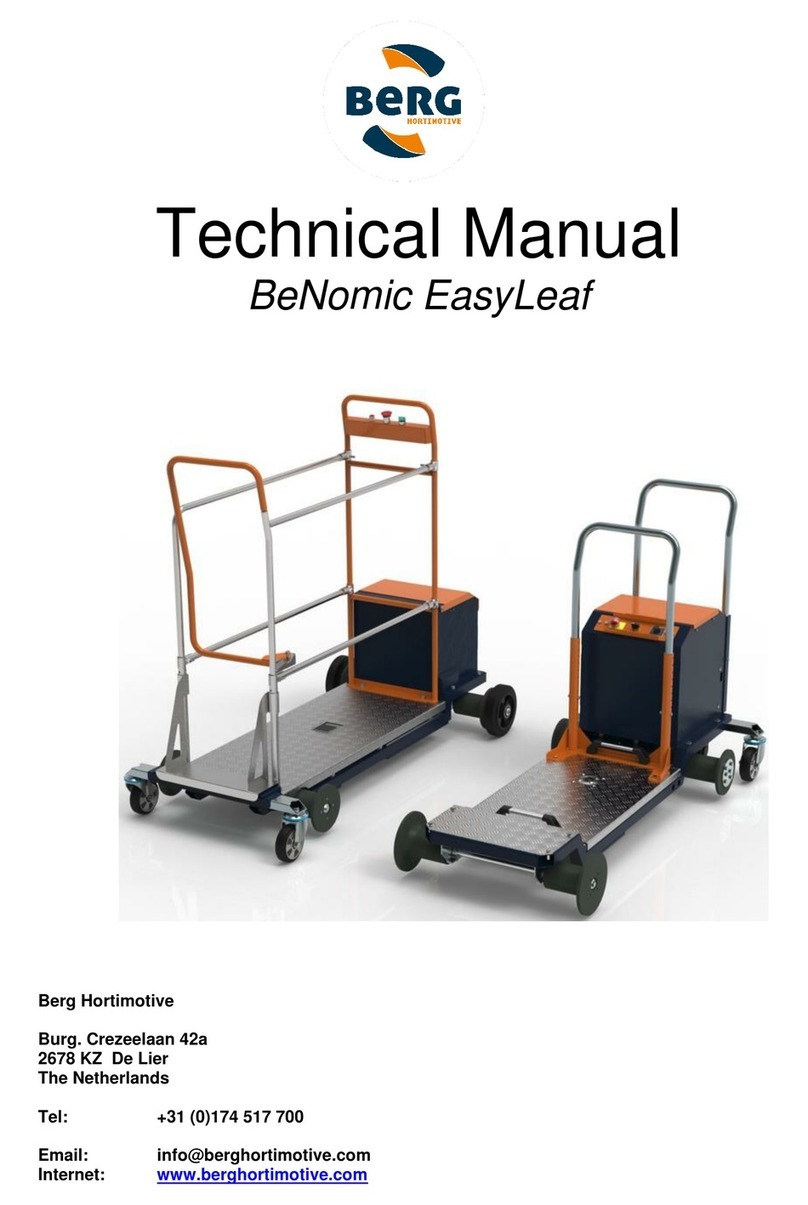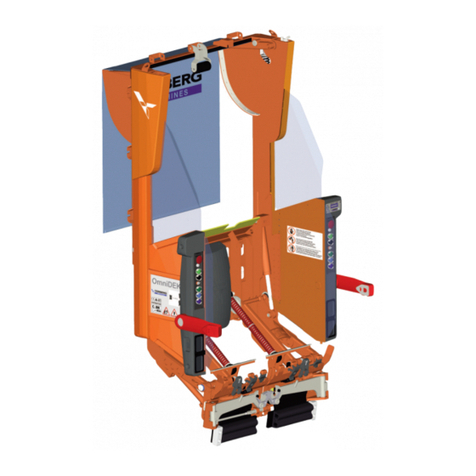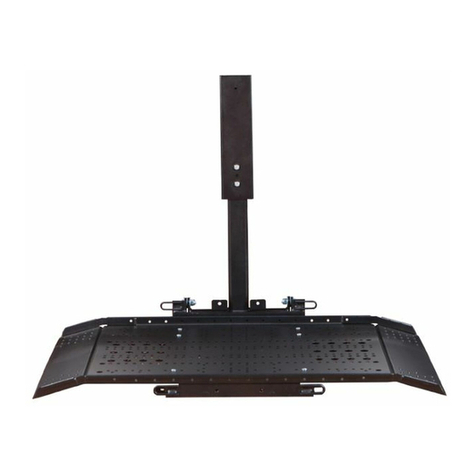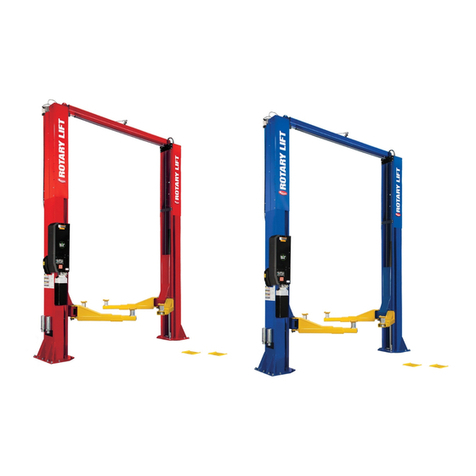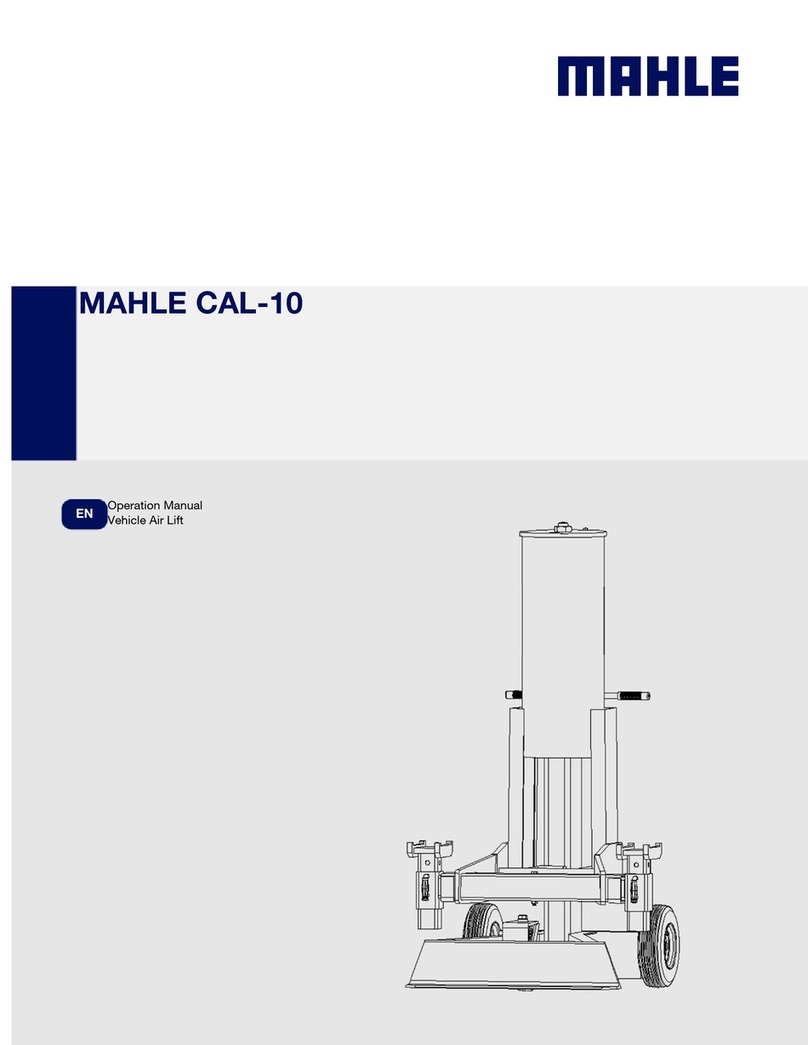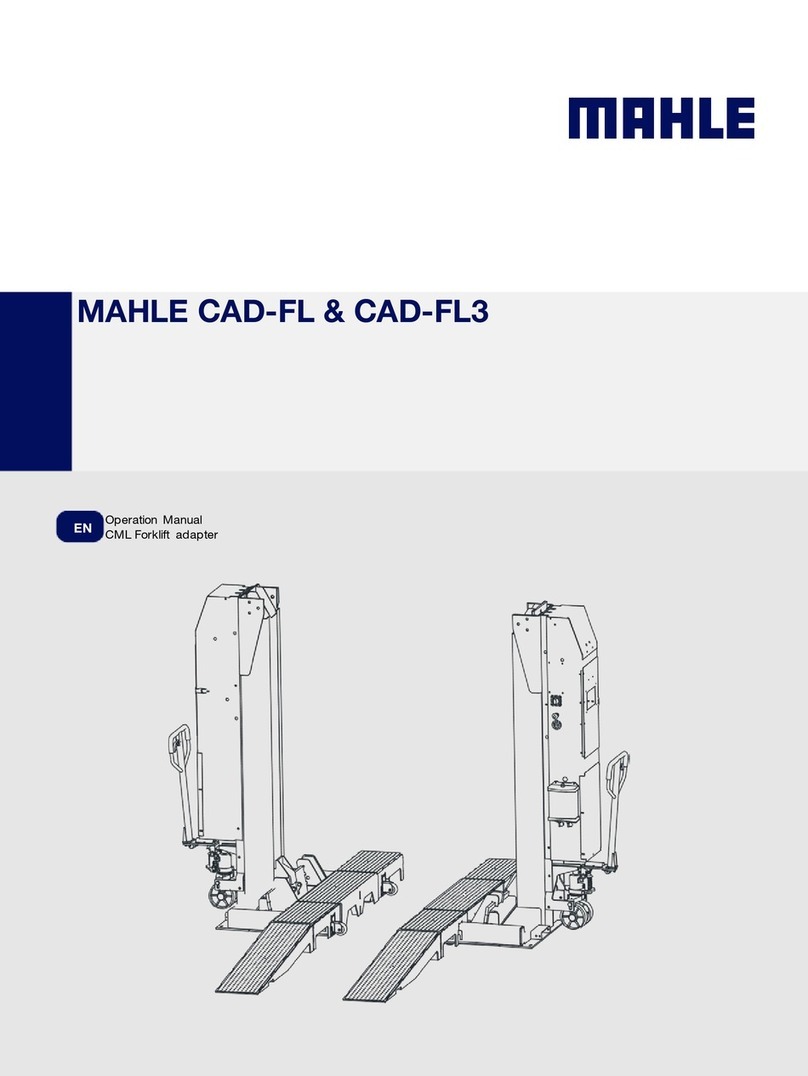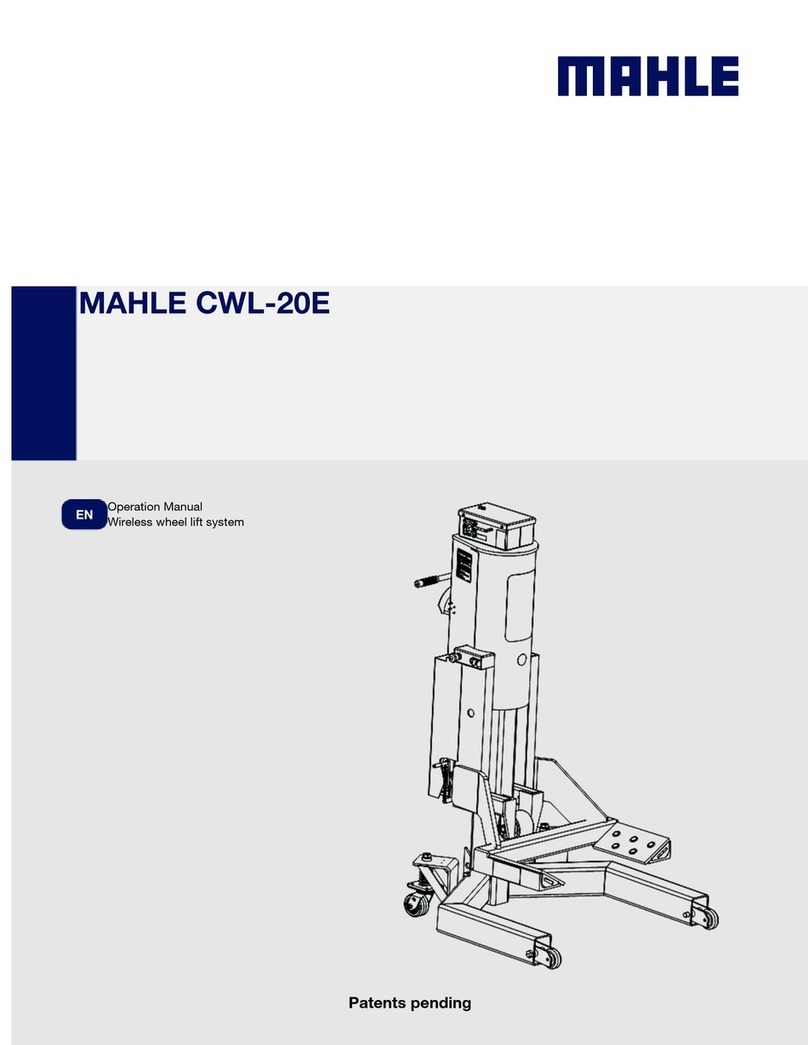
en | 4 | CML Series Safety Regulations
1. Safety Regulations
1.1 Warnings
Read all instructions in this manual before
operating the lift unit to avoid severe injury or
death. All the steps and procedures in this manual
relate to the safe use of the lift system. Contact the
manufacturer using the contact information on the
back cover of this manual if you have any questions
about this unit or its instructions and warnings. Do not
use this product unless you know exactly what you are
doing and are sufficiently trained and capable of using
the lift system safely (see Owner/operator
responsibilities). When using the lift system, always
adhere to basic safety precautions, including the
following:
Anyone who operates this jack must read and
understand all the instructions and warnings
provided with this lift before being allowed to
use it. All operators must be careful, competent,
trained, and qualified in the safe operation of the lift.
The owner (or other responsible individual) must
ensure that any operator always observes the pr oper
safety procedures for using this lift. Ifthe operator does
not read well or is not fluent in English, the owner /
manager must read and review the instructions and
warnings in the manual with the operator in the
operator's native language to be sure that the operator
will use the lift properly.
The owner / manager must keep this manual for
future reference, and make sure the warning labels
on the equipment are legible and intact at all times.
Replacement labels and manuals are available from the
manufacturer. Call the manufacturer using the contact
information on the back cover ofthis manualif you have
any questions.
Make sure the load does not exceed the
maximum capacity of the lift. Maximum capacityfor
an individual lift unit is listed on the lift unit’s ID decal.
Do not overload any individual lift unit in the lift system.
Never modify the product in anyway. Modifications
(other than those explicitly discussed in this manual –
e.g., use of optional adapters) may cause the lift to
perform improperly, resulting in injury or death.
Always use lift on a hard level surface, capable
of sustaining the load. Be sure surface is clean and
free of debris, cracks, and chips.
Do not use the lift system to raise a vehicle by
the frame or structural member. Lift vehicles with
the lift system only by the vehicle’s wheels (except
when using manufacturers supplied special-purpose
adapters for their intended application).
The lift system is to be used only in sets of 2, 4, 6,
or 8 lift units – never as a single lift unit. The only
exception to this requirement is when using a
single unit in Tire Mode as described. Lift only
on the same axle.
Fig. 1: Lift on same axle
Do not raise one end of a vehicle if the opposite
end is supported by stands or another lifting
device. When using two lift units to raise one end of a
vehicle, the opposite end of the vehicle must be in
contact with the ground, transmission in neutral and
parking brake released. The only exception to this
requirement is when using the lift system in single or
paired mode as described in “Single/paired mode”.
Do not raise or lower one side of a vehicle (except
when using Tire Mode). Lift units shouldALWAYS be
usedin pairs to lift wheels on opposite ends of the same
axle.
Do not use the lift system in conjunction with any
other equipment used to raise a vehicle (e.g., any
other jacks or lifts that are not part of the lift system).
Never use blocks, adapters, or accessories that
have not been provided by the manufacturer, or
cribbing devices of any kind with this lift system.
Do not place hands, feet, other body parts, or
clothing on or near the lift table. There are potential
pinch points that can injure hands and fingers or
possibly grab clothing and pull body parts into pinch
points.












